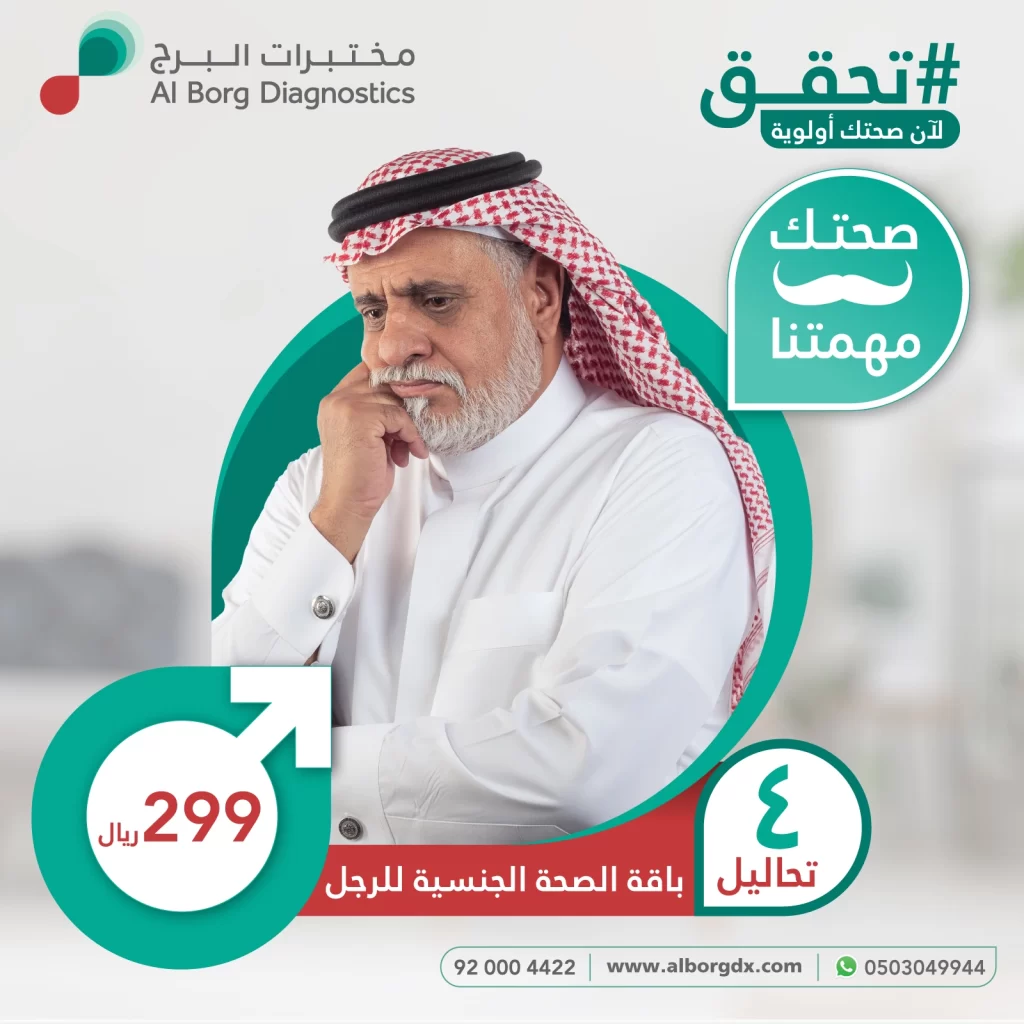
Al Borg Diagnostics
Normal Testosterone Levels in Men
Testosterone, also known as the androgen hormone, is essential for the health of both men and women. It provides significant benefits, such as controlling sexual drive, regulating sperm production, increasing muscle mass, and boosting energy levels.
However, an imbalance in testosterone levels can cause adverse side effects on the body, such as an increased risk of testicular and ovarian cancer, testicular failure, reproductive gland disorders, early or delayed puberty, and other effects. (1)
Normal Testosterone Levels in Men
Testosterone is produced in the testes in men, along with tiny amounts produced by the adrenal gland. Its levels vary with age and are influenced by several factors. Here are the normal testosterone levels in men according to age: (2)(3)
Fetal Period in Males (In Utero)
Testosterone production begins during fetal development, crucial for developing the male reproductive system. Doctors generally expect testosterone levels to be less than 1.8 nanograms per deciliter.
Childhood
Testosterone levels start to rise as the child grows older. It is expected to range from 1.8 to 5.68 nanograms per deciliter when the child reaches the age of 7–10 years. Then, the levels increase significantly to 208.08 – 496.58 nanograms per deciliter from 13 to 17 years.
Adolescence
Testosterone levels continue to increase, reaching their peak during adolescence. It is expected that testosterone levels during this period will range from 265 to 923 nanograms per deciliter.
Maturity
Testosterone levels gradually decrease as men age, with a 1% yearly decline after age thirty.
Disorders of Testosterone Levels in Men
Your readings may differ from the normal testosterone level, indicating disturbances in their levels. Continue reading to learn more details:
Low Testosterone Levels in Men
Low testosterone levels are the most common condition among men. It occurs when testosterone levels fall below the previously mentioned normal levels, and it is accompanied by a set of symptoms, such as: (4)(5)
- Breast enlargement.
- Decreased sexual drive.
- Problems with achieving erections.
- Decreased sperm count.
- Fertility issues.
- Weak bones.
- Difficulty concentrating.
- Hair loss.
- Depression.
- Loss of muscle mass.
Such conditions are treated by prescribing medications containing testosterone in various forms, such as injections, skin patches, and topical creams.
High Testosterone Levels in Men
Conversely, high testosterone levels in men are rare. They can cause the following symptoms: (4)(6)
- Decreased sperm count.
- Enlarged prostate.
- Cardiac muscle damage.
- Liver diseases.
- Acne.
- Weight gain.
- Fluid retention.
- High blood pressure or high cholesterol.
- Headaches.
- Increased muscle mass.
When dealing with such a condition, doctors first identify the underlying cause and then treat and manage it to control hormone levels. In addition, they may resort to certain medications, such as steroid production inhibitors and human chorionic gonadotropin hormone analogs.
Diagnosing Testosterone Levels
You can determine the testosterone levels by undergoing a blood test, which involves taking a blood sample from the arm vein.
It is worth mentioning that the test does not require any prior precautions, but the best time to perform it is between 7 am and 10 am because testosterone levels are highest during the early morning hours.
This test does not cause significant pain or side effects. People describe the needle prick as a mild rubber band snap on the skin. (7)
Feel free to visit any of Al-Borg Diagnostics branches to have your testosterone levels tested. You can also benefit from a special package for men’s health called the Men Sexual Health Package, and you can receive additional tests from an expert and specialized medical team.
References:
- https://premiermensmedical.com/blog/normal-testosterone-levels-in-men-by-age/
- https://www.healthline.com/health/low-testosterone/testosterone-levels-by-age#abnormal-levels
- https://www.medicalnewstoday.com/articles/323085#testing
- https://www.verywellhealth.com/testosterone-levels-5212199
- https://www.medicinenet.com/high_and_low_testosterone_levels_in_men/views.htm
- https://www.medicalnewstoday.com/articles/signs-of-high-testosterone#treatment
- https://www.mountsinai.org/health-library/tests/testosterone#:~:text=Normal%20Results&text=Male%3A%20300%20to%201%2C000%20nanograms,per%20liter%20(nmol%2FL)
Check your health with
Men Sexual Health Package





